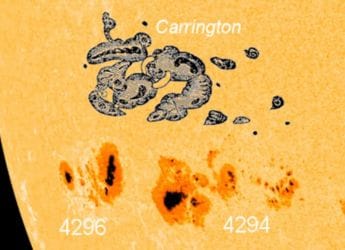- Home
- Science
- Science News
- Microscopic Tooth Scratches Unlock Secrets of Sauropod Dinosaurs
Microscopic Tooth Scratches Unlock Secrets of Sauropod Dinosaurs
A new study applies dental microwear texture analysis (DMTA) to sauropod dinosaurs for the first time.

Photo Credit: Wikimedia Commons
First study used DMTA to analyse sauropod dinosaur teeth wear
The first study to utilise microscopic damage on sauropod dinosaur teeth, a method known as Dental Microwear Texture Analysis (DMTA), has shed light on the feeding habits and locomotion of herbivores 150 million years ago, according to new findings reported on September 7, 2025, by Freie Universität Berlin. The study of 322 high-resolution 3D scans of teeth from sites in Portugal, the USA and Tanzania provided information about the migration, dietary specialisation and environmental conditions of Jurassic ecosystems. This represents the first systematic use of DMTA on long-necked dinosaurs, providing novel insights into paleoecology.
New Insights from Sauropod Tooth Microwear Studies
According to Science Daily, the international group, which included Dr. Daniela E. Winkler, Dr. Emanuel Tschopp and PhD student André Saleiro, applied DMTA for the first time to dinosaur sauropod bony matter; the technique was first developed for mammals.
They analysed the wear patterns in teeth to determine the diet and behaviour of these colossal creatures, offering new insight into how such dinosaurs lived and interacted with their environment.
Climate, Migration, and Future Research Directions
Comparison of 322 scans coming from 39 specimens of three emblematic Jurassic formations (the Lourinhã in Portugal, Morrison in the USA and Tendaguru in Tanzania) showed pronounced interspecific and regional variation. In contrast, Camarasaurus specimens were similar between Portugal and the USA, suggesting similar dietary selections, perhaps seasonal migration to feed on favoured plants.
The sandwich of tropical to semi-arid environment led to the fixation of quartz-rich sand in the vegetation, thus promoting heavy tooth wear. This unique pattern reflects the significance of climate in terms of dental wear compared with dietary factors.
The research not only illuminates sauropod ecology, including niche partitioning and climatically driven behaviour, but also lays the groundwork for further studies. They will also investigate dietary differences between ages, dwarf species such as Europasaurus, and add to the dataset for Portuguese fauna.
Get your daily dose of tech news, reviews, and insights, in under 80 characters on Gadgets 360 Turbo. Connect with fellow tech lovers on our Forum. Follow us on X, Facebook, WhatsApp, Threads and Google News for instant updates. Catch all the action on our YouTube channel.
Related Stories
- Samsung Galaxy Unpacked 2025
- ChatGPT
- Redmi Note 14 Pro+
- iPhone 16
- Apple Vision Pro
- Oneplus 12
- OnePlus Nord CE 3 Lite 5G
- iPhone 13
- Xiaomi 14 Pro
- Oppo Find N3
- Tecno Spark Go (2023)
- Realme V30
- Best Phones Under 25000
- Samsung Galaxy S24 Series
- Cryptocurrency
- iQoo 12
- Samsung Galaxy S24 Ultra
- Giottus
- Samsung Galaxy Z Flip 5
- Apple 'Scary Fast'
- Housefull 5
- GoPro Hero 12 Black Review
- Invincible Season 2
- JioGlass
- HD Ready TV
- Laptop Under 50000
- Smartwatch Under 10000
- Latest Mobile Phones
- Compare Phones
- Lava Play Max
- Poco C85 5G
- Honor Magic 8 Lite
- Jolla Phone
- Realme P4x 5G
- OnePlus Ace 6T
- Nubia Flip 3
- Nubia Fold
- Asus ProArt P16
- MacBook Pro 14-inch (M5, 2025)
- OnePlus Pad Go 2
- Poco Pad M1
- Just Corseca Skywatch Pro
- Honor Watch X5
- Acerpure Nitro Z Series 100-inch QLED TV
- Samsung 43 Inch LED Ultra HD (4K) Smart TV (UA43UE81AFULXL)
- Asus ROG Ally
- Nintendo Switch Lite
- Haier 1.6 Ton 5 Star Inverter Split AC (HSU19G-MZAID5BN-INV)
- Haier 1.6 Ton 5 Star Inverter Split AC (HSU19G-MZAIM5BN-INV)

















